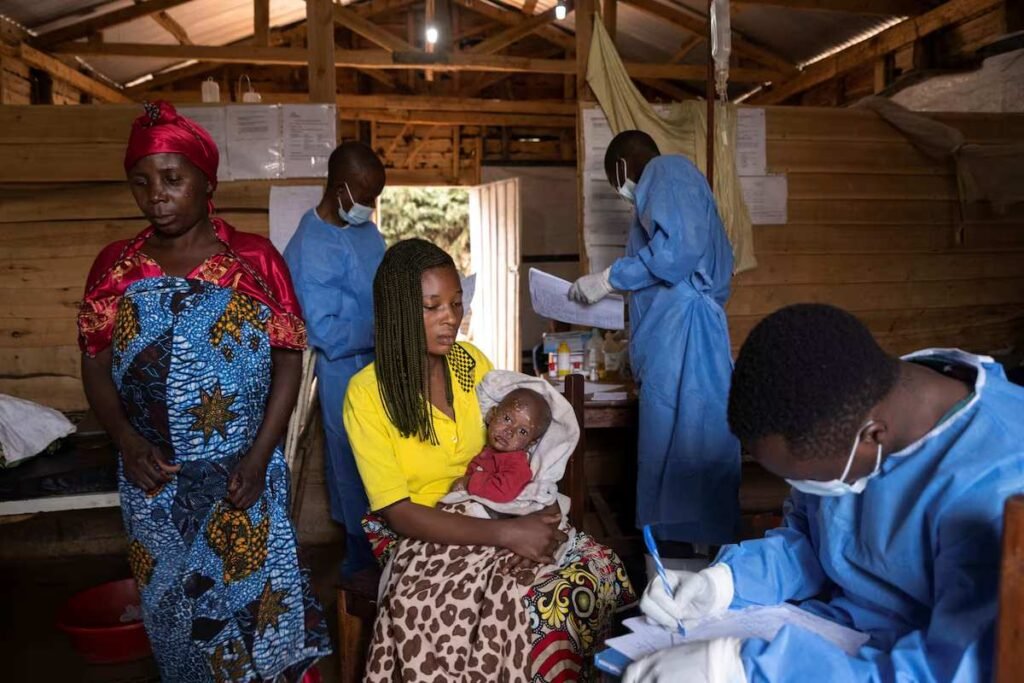(Source-theglobeandmail.com)
Kavumu, Democratic Republic of Congo – In a makeshift isolation ward in Kavumu, Eastern Democratic Republic of Congo, dozens of feverish mpox patients lie on thin mattresses on the ground, enduring a lack of medicine and food. The hospital, overwhelmed by the influx of patients, struggles to provide adequate care amidst severe resource shortages.
The Democratic Republic of Congo has become the epicenter of an mpox patients outbreak that the World Health Organization recently declared a global public health emergency. The situation has escalated quickly, with over 900 symptomatic patients admitted to the Kavumu hospital in the past three months alone. Vaccines to combat the new strain of the virus are expected to arrive soon, and President Felix Tshisekedi has approved an initial $10 million to fight the outbreak. However, these measures have yet to alleviate the dire conditions on the ground.
Overwhelmed Healthcare Workers
Healthcare workers at the Kavumu hospital are under immense strain, dealing with a severe shortage of essential medicines and a lack of space to accommodate the growing number of patients. “We run out of medicine every day,” said Dr. Musole Mulamba Muva, the head doctor at the hospital. The hospital relies heavily on donations from international organizations, but these have been dwindling rapidly, leaving local staff struggling to meet the needs of their patients.
The situation in the mpox patients ward is particularly challenging. Last week, 135 patients, including children and adults, were crammed into three large plastic tents pitched on damp earth without proper flooring. The overcrowded conditions only add to the difficulties faced by the hospital staff.
Lack of Food and Basic Care
Adding to the plight of the patients is the lack of food. In underfunded public hospitals like Kavumu, relatives typically provide meals for the patients. However, due to the contagious nature of mpox patients, visitors are banned from the isolation ward, leaving patients without sufficient food. “We do not have anything to eat,” lamented Nzigire Lukangira, a 32-year-old mother caring for her hospitalized toddler. She also highlighted the lack of basic medical supplies, such as fever-reducing medication, to help alleviate her child’s suffering.
With limited access to conventional medicine, patients and their caregivers have resorted to using traditional remedies to ease the symptoms of mpox patients. Mothers, including Lukangira, have been dipping their fingers in potassium bicarbonate or salty lemon juice to pop their children’s blisters in a desperate attempt to provide some relief. Adult patients have also resorted to these methods, highlighting the severe lack of medical resources.
Government and International Response
Dr. Cris Kacita, head of Congo’s mpox patients response team, acknowledged the widespread shortages of medicine in parts of the country. He emphasized that donating 115 tonnes of medicine from the World Bank, is a top priority. However, the needs remain overwhelming.
Local health ministry representative, Dr. Serge Munyau Cikuru, has called on the government to continue pushing for the rapid deployment of vaccines to control the outbreak. According to Dr. Kacita, high-risk contacts and nine priority areas have already been identified for the first phase of vaccination.
The Growing Crisis
Since the start of the year, the Democratic Republic of Congo has reported 19,710 suspected cases of mpox, with 5,041 confirmed cases and 655 fatalities by the end of August, according to the health ministry. The numbers continue to rise as the country grapples with this escalating health crisis.
As the world watches, the situation in eastern Congo serves as a stark reminder of the urgent need for international support and swift action to address the humanitarian and medical challenges posed by the mpox outbreak patients.









